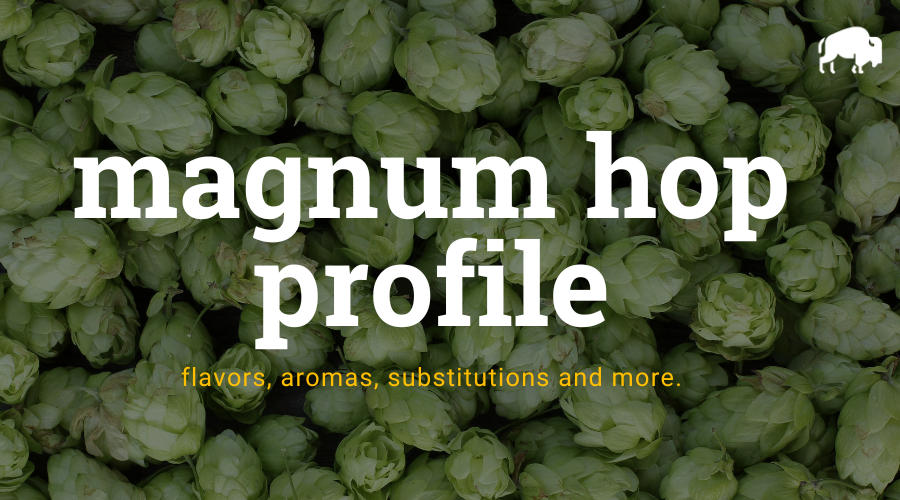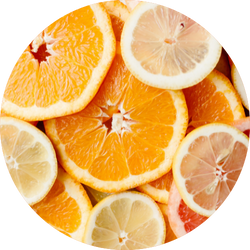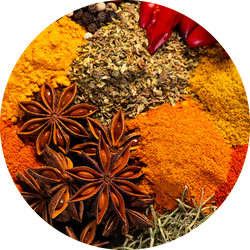
Hallertauer Magnum, a high alpha hop variety, originated from the Hüll Hop Research Center in Germany in 1980. This hop is a daughter of U.S. Galena and is known for its large, heavy cones, good yields, and disease resistance. It was released to the brewing world in 1993, and its cultivation has expanded to include the United States.
Although Magnum is predominantly used for bittering, some brewers have noted subtle flavors and aromas from this hop, including lemon, green pepper, spearmint, and apple. When used later in the boil, these understated characteristics offer a mild, fresh flower and fruit profile. Hallertauer Magnum is appreciated for providing a smooth and clean bitterness like Nugget and Horizon hops.
Hallertauer Magnum’s high alpha content and versatile bittering power make it an excellent choice for various beer styles. We recommend trying Magnum in German Pilsner, American Pale Ale, American India Pale Ale, Belgian Pale Ale, and English IPA. It’s mild aroma and excellent bittering capabilities contribute to these beer styles’ overall balance and enjoyment.
| Usage: | Bittering |
| Country of Origin: | United States |
| Hop Growers Code: | HMG |
Where To Buy Magnum (US) Hops
Magnum (US) Flavor And Aroma
Magnum (US) is a bittering hop that is often described to have the following aroma characteristics:

floral

citrus

spicy, black pepper
Magnum (US) Hop Oil Breakdown
Hop oils can vary from year to year and farm to farm but based on our research, here are the typical values we have seen reported. This information comes from various hop farms, The Hop Aroma Compendium, and For The Love Of Hops.
| Alpha Acid % (AA) Alpha acids are what is isomerized when boiling to create bitterness in beer. | 10% – 14% |
| Beta Acid % Beta acids are what give hops their more aroma and flavor compounds. | 4.5% – 7% |
| Alpha-Beta Ratio This ratio of alpha acids to beta acids determines how quickly bitterness fades during aging. Lower ratios are common for aromatic varieties. | 1:1 – 4:1 |
| Co-Humulone as a % of Alpha Higher numbers are said to impart a harsher bitterness. | 24% – 30% |
| Total Oils (mL/100g) With more total oils, typically comes a more complex hop profile but these are highly volatile compounds. | 1.9mL – 3.0mL |
| Myrcene green, resinous | 30% – 45% |
| Humulene woody, piney | 30% – 45% |
| Caryophyllene woody | 8% – 12% |
| Farnesene floral | 0% – 1% |
| Other Oils: Includes beta-ionine, beta-pinene, limonene, linalool, geranoil & selinene | 0% – 32% |
| Hop Storage Index (HSI) The HSI indicates the percent of alpha and beta acids lost after 6 months of storage at room temperature (68°F or 20°C). | Retains 82% of its alpha acid after 6 months of storage at 20ºC (68ºF). |
| Hop Storage Index (HSI) Rating | Great |
Magnum (US) Hop Substitutions
Replacing one hop for another is seldom straightforward but sometimes you don’t have the right hop or the right quantity of hops for the beer you want to make. For those situations, we have made a comprehensive list of hops to substitute on brew day.
These substitutions aren’t perfect as hop chemistry is pretty complex.
We wanted to make this list of substitutions with varietals that are easy to find when possible. For Magnum (US), we recommend substituting with the following hops:
Beer Styles
For the most part, any hop could have a place in just about any beer style. Based on popular beers, historical usage, and our own preferences, we would recommend using Magnum (US) for IPA, New England IPA, Pale Ale, Wheat Beer, Golden Ale. That being said, experiment and see what works best for you.
References
https://www.hopslist.com/
https://www.ars.usda.gov/
https://www.brewersassociation.org/
https://www.barthhaasx.com/
https://www.yakimachief.com/
Hieronymus, Stan. For The Love of Hops. Brewers Publications, 2012
The Hop Aroma Compendium. 2012


